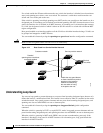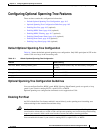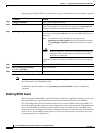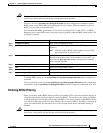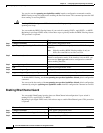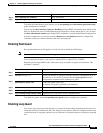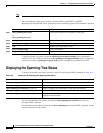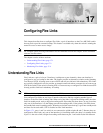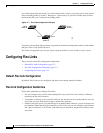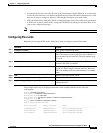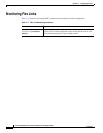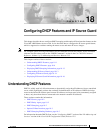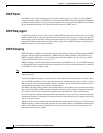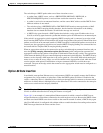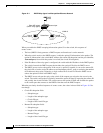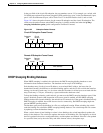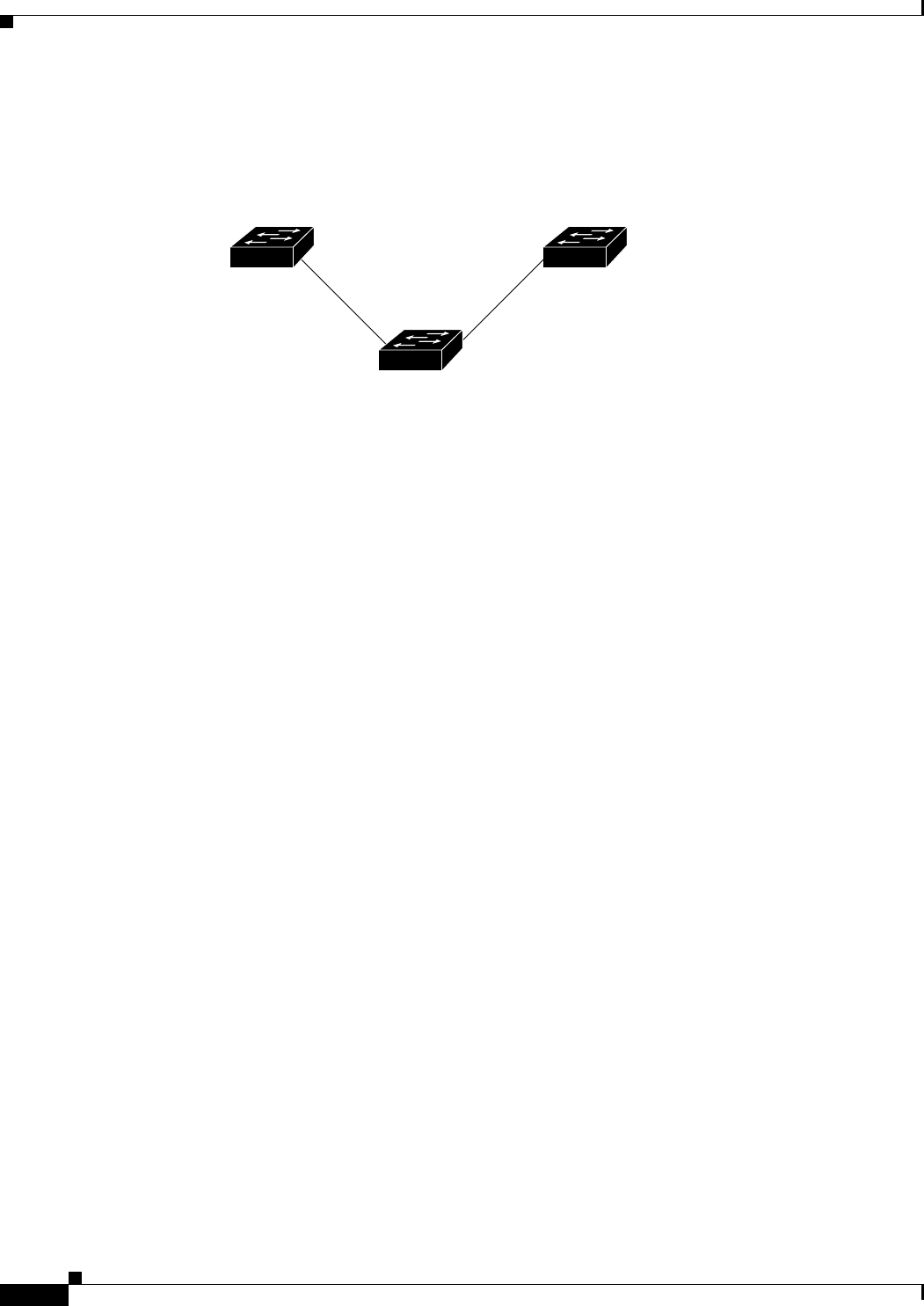
17-2
Cisco ME 3400 Ethernet Access Switch Software Configuration Guide
78-17058-01
Chapter 17 Configuring Flex Links
Configuring Flex Links
port 2 (the backup link) and switch C is not forwarding traffic. If port 1 goes down, port 2 comes up and
starts forwarding traffic to switch C. When port 1 comes back up, it goes into standby mode and does
not forward traffic; port 2 continues forwarding traffic.
Figure 17-1 Flex Links Configuration Example
If a primary (forwarding) link goes down, a trap notifies the network management stations. If the standby
link goes down, a trap notifies the users.
Flex Links are supported only on Layer 2 ports and port channels, not on VLANs or Layer 3 ports.
Configuring Flex Links
These sections contain this configuration information:
• Default Flex Link Configuration, page 17-2
• Flex Link Configuration Guidelines, page 17-2
• Configuring Flex Links, page 17-3
Default Flex Link Configuration
By default, Flex Links are not configured, and there are no backup interfaces defined.
Flex Link Configuration Guidelines
Follow these guidelines to configure Flex Links:
• You can configure only one Flex Link backup link for any active link, and it must be a different
interface from the active interface.
• An interface can belong to only one Flex Link pair. An interface can be a backup link for only one
active link. An active link cannot belong to another Flex Link pair.
• Neither of the links can be a port that belongs to an EtherChannel. However, you can configure two
port channels (EtherChannel logical interfaces) as Flex Links, and you can configure a port channel
and a physical interface as Flex Links, with either the port channel or the physical interface as the
active link.
Switch A
Uplink
switch B
Port 1 Port 2
Uplink
switch C
116082



